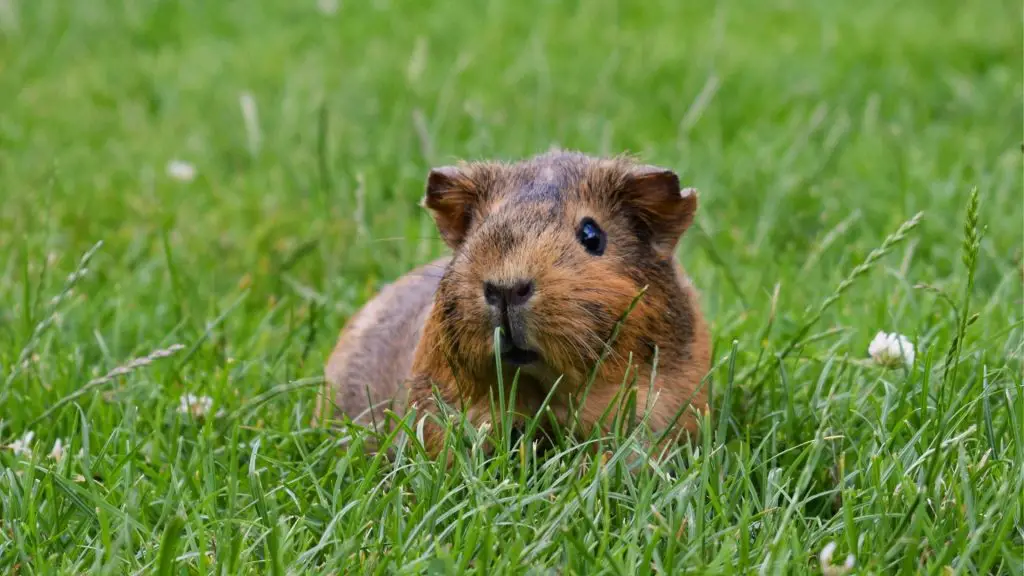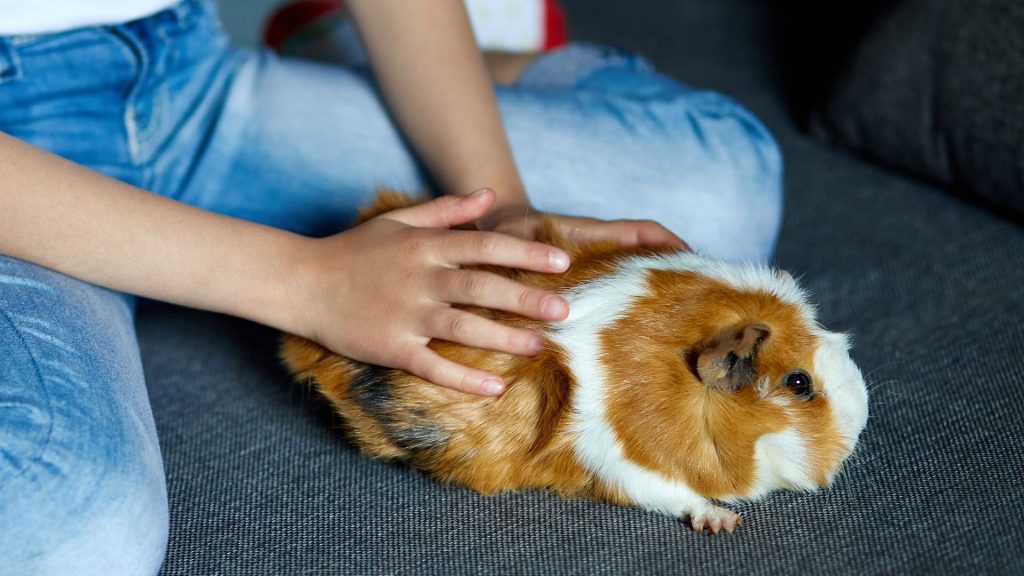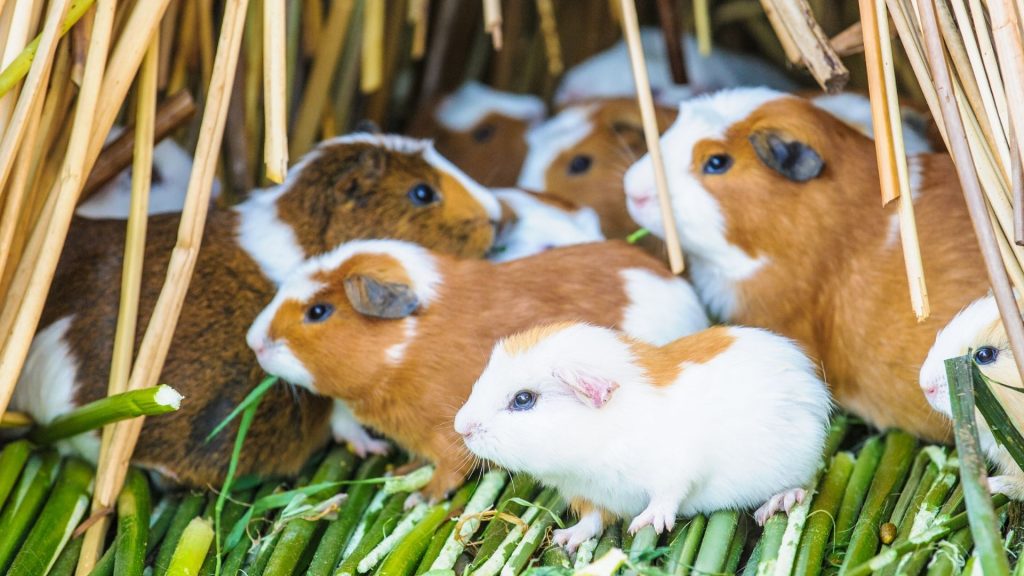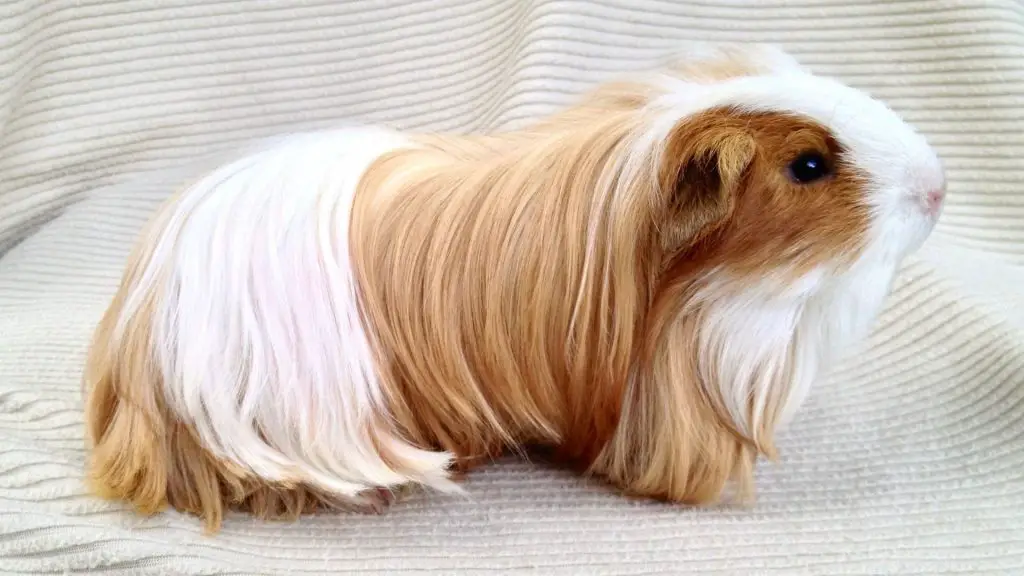Guinea pigs are not rodents from the Guinea region in Africa, and obviously, they are not related to pigs. A lot of questions in your mind have always been there, and this article might be the answer.
Where are guinea pigs native to? Guinea pigs are native to South America, where they live in the wild. They usually live in forest edges, grasslands, and rocky areas.
Even though we adopted guinea pigs and made them completely domesticated, it’s interesting to know where they come from.
Most of you would not believe it, but guinea pigs are wild animals, although they are rodents. This article will discuss where guinea pigs are native to, historical information, and interesting facts about their name.
Table of Content
Where Did They Come From?

The guinea pigs are native animals in South America, where you can still find them in the wilderness. However, these guinea pigs are much different than those pets in our homes. As they’re now domesticated, our guinea pigs don’t possess some of the primal instincts that wild guinea pigs have. For example, wild guinea pigs are afraid of humans, and since they’re not predatory animals, their life in the wilderness is harsh and dangerous.
Guinea pigs in South America’s forests usually live in a pack or a ’group’ of 10 adult guinea pigs. As they’re essentially rodents, they don’t go out in the wilderness very often. They live in burrows dug either by guinea pigs or other animals in grassland, forest edges, and even rocky areas. Since they aren’t carnivores, these animals are most active at night when they feast on a wide variety of plants. This is a common difference between domestic and wild guinea pigs.
Wild guinea pigs are nocturnal animals, while domestic guinea pigs can display both nocturnal and diurnal behavior.
History of Domestication

The first guinea pig was domesticated a long time ago – 2000 BC. Of course, the first case of domestication is in the Andes in South America. This area is now known as Peru and Bolivia. While guinea pigs were initially kept for food, families started buying them as pets for their children, which we do today. However, some countries still use guinea pigs as food, which we will talk about later.
At that time, guinea pigs were very rarely bought. Instead, people would often gift a guinea pig to special children or as a wedding gift. Strange, isn’t it? How would you react if someone gave you a guinea pig on your day of the wedding? Coupled with the fact that guinea pigs were free to run around and do what they wanted, people were definitely neglecting these widely-popular animals. The special cages for guinea pigs were developed later, keeping them safe and secure.
Role of Guinea Pigs Through History

Guinea Pigs in Traditional Medicine and Beliefs
Before the worldwide adoption of guinea pigs, they were mostly located in the Andes in South America. There, people believed that guinea pigs could help in traditional healing rituals. Guinea pigs were, in that case, known as evil spirit collectors. The process was simple, a guinea pig would be rubbed over the patient’s body, and if it started squeaking, people believed that the pig identified the critical area.
Most guinea pigs in South America were brown or grey at the time. However, people valued black guinea pigs the most, and they were considered holy, as they are the rarest specimen of guinea pigs.
How They Came to Europe?
A lot of time had passed from that period when guinea pigs were brought to Europe. To be precise, back in the 1700s, English and Dutch traders brought them to that continent, and they were very popular pets for aristocrats. Nowadays, guinea pigs are very popular among animal lovers. As animals who don’t scratch and bite, they are great pets for kids, and due to their friendliness and ability to amuse people, they are great for every person.
Where Did the ’Guinea Pig’ Name Originate?

This is a very tricky question to answer. First of all, no one knows how guinea pigs got this name. They are very different from pigs, and they aren’t even from Guinea! However, we do have some speculations heard from historians. They speculated that roasted meat reminded European people of suckling pigs and as such, guinea pigs somehow got their name. On the other hand, some historians said that these pigs got the name from the squealing sound they produced.
Guinea pigs definitely passed through Guinea, which might be one of the reasons for the name. Carried from Guiana in South America or Guinea in West Africa to Europe, guinea pigs could quite possibly get the name. Another speculation that seems to be the most valid comes from the price of a guinea pig in England in the 16th century, which was for 1 guinea.
Other countries call guinea pigs differently. For example, they call them porchitas da India in Portugal, which means little pigs from India. French call them lapins de Barbarie, which means barbary rabbits, although they aren’t rabbits and they’re definitely not barbarous. The fact that they aren’t pigs is even more conspicuous now. Portugals call them pigs, while French call them rabbits. Guinea pigs are much more akin to rabbits than pigs, especially since they’re small animals and don’t have any physical resemblance to pigs.
So, are they pigs or rabbits? Let’s say they’re both, but they definitely share a lot of characteristics with rabbits.
Guinea Pigs in Non-Native Countries
Back in South America, guinea pigs were used as food initially and are now used as pets in many countries worldwide. However, some countries still use guinea pigs for food as rodents find their way to our plates more than ever. A pure example of this would be the United States. With this trend massively growing over the whole United States, South American restaurants are also trying to push this trend a little further. As they represent a native country for guinea pigs, it’s very favorably for them to include this trend.
In Colombia, Peru, and Ecuador, guinea pigs represent valuable and nutritious food. Many bloggers from these countries love eating them, and they even write their blogs based on the guinea pigs. Guinea pigs are often cooked whole, sometimes grilled, and even deep-fried. This food is adored by many countries now, and many customers eat whole guinea pigs!
Some nutritionists and nutrition experts advise people to switch from cattle to guinea pigs, as their meat is very similar. While cattle require the land to be properly fed and kept, guinea pigs don’t require even a small fraction of that. Guinea pigs can be kept at your home or in backyards, and they’re very easy to raise. Some companies from the USA are encouraging people to create their own guinea pig farms. They usually give the owner a guinea pig family consisting of one male and several female guinea pigs.
This family is then easily and rapidly expanded throughout one month, doubling in size and sometimes a number. However, those who don’t want to raise their own farm but buy and eat guinea pigs should know that they mostly come from Peru. They are usually hairless, frozen, whole in plastic bags, and are meant for human consumption.
As a guinea pig pet lover, you will be just amazed that someone would kill and eat these cuties. It might break your heart to know someone would do this.
Here is a video about guinea pig farming:
Summary
Guinea pigs are among the most popular pets out there, and their roots might not seem so obvious. Since they come from South American countries, it’s amazing that they are now so widespread. Today, guinea pigs are fully domesticated, friendly, and great with people. European countries use guinea pigs only as pets, and their popularity speaks for itself.
Not only that, they’re widely known but also kept as pets, and their value has increased over the years. After all, they’re not even from Guinea, and they’re not pigs, making them a bit mysterious. Isn’t that cool? You bet it is!
Related: Where Do Guinea Pigs Come From?
List of Sources
History and Importance of Guinea Pig Production for The Indigenous People of the Peruvian Andes
